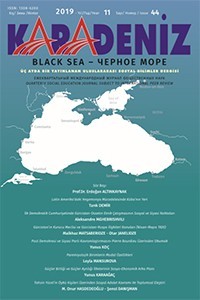ORHAN PAMUK KURGUSALINDA CİNSİYET: KADIN, ERKEK, ÇOCUK KARAKTERLERİN KURGUDAKİ KULLANIM ORANI
GENDER-BASED USAGE OF CHARACTERS IN ORHAN PAMUK’S FICTION
Author(s): Sibel YANARAY, Yakup ÇelikSubject(s): Turkish Literature
Published by: Kültür Ajans Tanıtım ve Organizasyon
Keywords: Turkish literature; Orhan Pamuk; novel; scenario; gender; character;
Summary/Abstract: Basic structure of literary texts consists of place, person, time and event. In some fictions, some elements are used decisively. Characters play a major role in the development of fiction. It provides a better perception of main event and the characters' experiences and brings the conflict to the peak. He sees his dreams, his frustrations, his expectations, his inner conflicts, his sadness, his life or his wishes. In other words, he sees himself in the fictional world.Act of sight will actually begin with empathy the person establishes. Identities such as women, men and children enable reader to empathize over experiences in novels and increase the identification rate with characters over time. At this point, it was decided to evaluate usage of gender and their usage rates in his novels. While conducting study on occupations in Orhan Pamuk's fiction, we found in Orhan Pamuk's fiction-based texts, he evaluated characters by associating them with occupations. While determining this, it was examined usage of gender in his fictional texts. It’s observed that gender is used in a certain way in reflections of characters in the course, conflict, emotion and sense transfer. Some are process novels, where women can be observed, albeit slightly, while number of child characters increases. Men have been used extensively in all fictions. All these observations were identified and templated with numerical data. In Orhan Pamuk's fiction, where relationship between literature and sociology is embodied through professions, work of gender concept in fictional world was evaluated from writer's point of view by specifying relationship between profession, character, gender and place of women, men and children.
Journal: Karadeniz Uluslararası Bilimsel Dergi
- Issue Year: 2019
- Issue No: 44
- Page Range: 145-159
- Page Count: 15
- Language: Turkish

